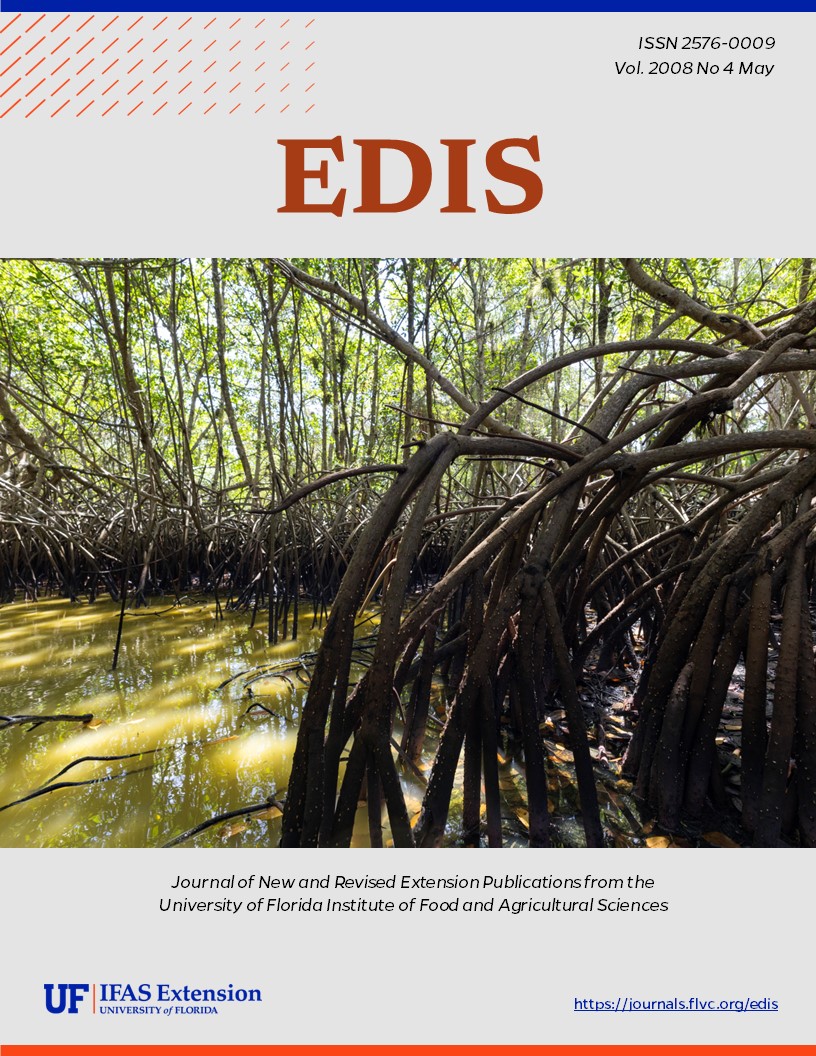Abstract
WEC-242, a 9-page illustrated fact sheet by Rebecca G. Harvey, Matthew L. Brien, Michael S. Cherkiss, Michael Dorcas, Mike Rochford, Ray W. Snow, and Frank J. Mazzotti, describes the population of Burmese pythons in south Florida, python reproduction, size and appearance, and the work of the Python Science Support Team. Includes information about how Florida residents can help prevent the spread of invasive snakes, and references. Published by the UF Department of Wildlife Ecology and Conservation, April 2008.
References
Branch, W. R. and H. Erasmus. 1984. Captive breeding of pythons in South Africa, including details of an interspecific hybrid (Python sebae natalensis x Python molurus bivittatus). Journal of the Herpetological Association of Africa 1984(30):1-10. https://doi.org/10.1080/04416651.1984.9650132
Carmichael, P. and W. Williams. 2006. Florida's Fabulous Reptiles and Amphibians. Tenth edition. Hawaiian Gardens, CA: World Publications. 121 pp.
Colvin, B. A., M. W. Fall, L. A. Fitzgerald, and L. L. Loope. 2005. Review of brown tree-snake problems and control programs: report of observations and recommendations. Report to Office of Insular Affairs, Honolulu, Hawaii.
Dorcas, M. E. and J. D. Willson. in press. Innovative methods for studies of snake ecology and conservation. In Snakes: Applied Ecology and Conservation, edited by S. Mullin and R. Seigel. Ithaca, NY: Cornell University Press.
Ernst, C. H. and G. R. Zug. 1996. Snakes in Question. Washington, DC and London: Smithsonian Institution Press. pp. 91-169.
Lederer, G. 1956. Fortpflanzungsbiologie und entwicklung von Python molurus molurus (Linné) und Python molurus bivittatus (Kühl). Die Aquarien- Und Terrarien-Zeitschrift 9:243-248.
Meshaka, W. E., W. F. Loftus, and T. Steiner. 2000. The herpetofauna of Everglades National Park. Florida Scientist 63(2):84-102.
Minton, S. A. and M. R. Minton. 1973. Giant Reptiles. New York: Charles Scribner's Sons. pp. 198-227.
National Research Council. 2005. Re-engineering Storage in the Everglades: Risks and Opportunities. Washington, DC: National Academies Press.
Pope, C. H. 1961. The Giant Snakes. New York: Alfred A. Knopf.
Reed, R. N. 2005. An ecological risk assessment of nonnative boas and pythons as potentially invasive species in the United States. Risk Analysis 25(3):753-766. https://doi.org/10.1111/j.1539-6924.2005.00621.x
Snow, R. W., M. L. Brien, M. S. Cherkiss, L. Wilkins, and F. J. Mazzotti. 2007a. Dietary habits of Burmese python, Python molurus bivittatus, from Everglades National Park, Florida. Herpetological Bulletin 101:5-7.
Snow, R. W., K. L. Krysko, K. M. Enge, L. Oberhofer, A. Warren-Bradley, and L. Wilkins. 2007b. Introduced populations of Boa constrictor (Boidae) and Python molurus bivitattus (Pythonidae) in southern Florida. pp. 416-438 in The Biology of Boas and Pythons, edited by R. W. Henderson and R. Powell. Eagle Mountain, UT: Eagle Mountain Publishing.
Wall, F. 1921. Ophidia Taprobanica; or, The snakes of Ceylon. Colombo: H.R. Cottle, govt. printer. pp. 48-69. https://doi.org/10.5962/bhl.title.53694

